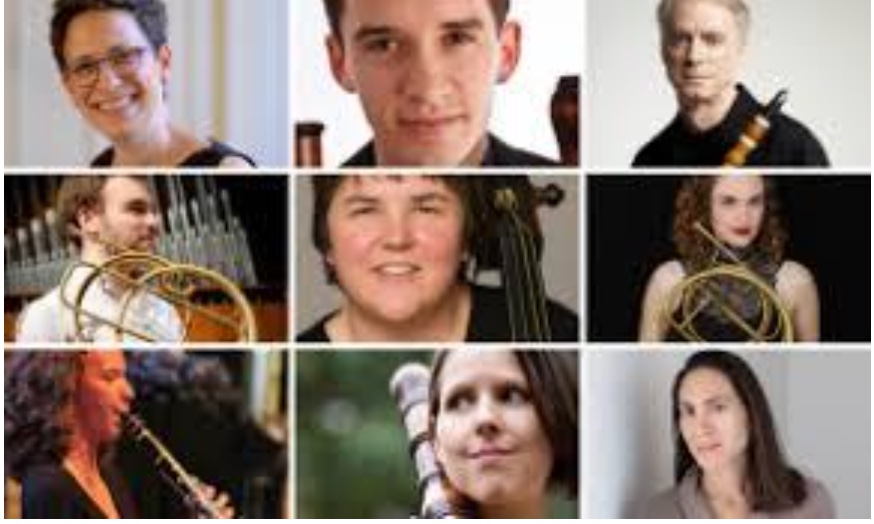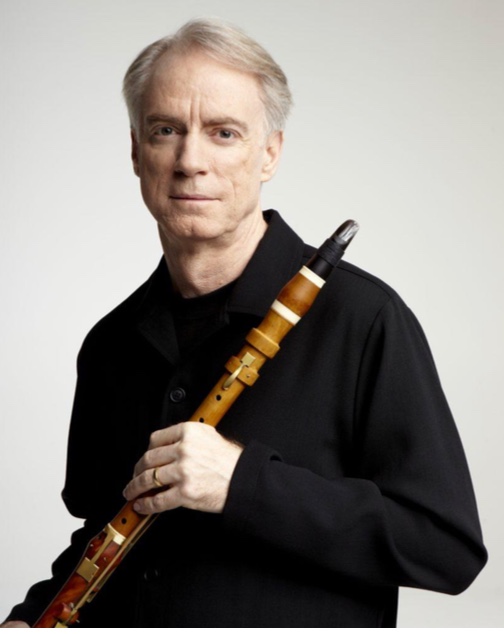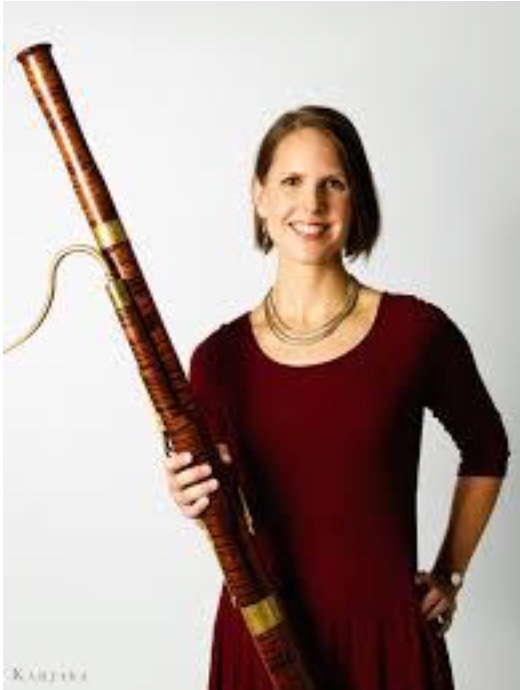by Mike Telin

“At eleven o’clock at night I was treated to a serenade performed by two clarinets, two horns and two bassoons — and that of my own composition. These musicians asked that the street door might be opened and, placing themselves in the center of the courtyard, surprised me, just as I was about to undress, in the most pleasant fashion imaginable with the first chord in E-flat.”
This week, Les Délices will open their season with “Moonlit Mozart.” Oboists Debra Nagy and Kathryn Montoya, clarinetists Eric Hoeprich and Madison Vienna, bassoonists Stephanie Corwin and Clay Zeller-Townson, hornists Nathanael Udell and Sadie Glass, and double bassist Sue Yelanjian will perform selections from The Magic Flute and Don Giovanni, the Adagio from the Serenade in E-flat, K. 375, and the Serenade in C minor, K 388.
Performances are on Thursday at 7:30 pm at First United Methodist Church of Akron, Saturday at 7:30 pm at Disciples Christian Church, and Sunday at 4:00 pm at West Shore Unitarian Universalist Church. Tickets are available online.
We spoke to Eric Hoeprich and Stephanie Corwin by telephone to get their insights into what makes Mozart’s wind music so magical.

We began our conversion by asking, as a clarinetist, what excites him about this program.
Eric Hoeprich: All of this music was written with the clarinetist Anton Stadler in mind. And in the case of the original pieces by Mozart — the movement from the Sextet and the big Octet, K. 388 at the end — we know that Mozart wrote those with what they called the Royal and Imperial Harmonie Group in mind. Joseph Heidenreich who arranged the Magic Flute, wasn’t one of the inner circle, but Josef Triebensee, who arranged Don Giovanni, was the Emperor’s oboist.
What I love about the program is that we’re seeing different aspects of Mozart, Mozart’s music, and Mozart’s musicians all coming out in various ways.
During that time, a Harmonie group could be found in every well-off household. It was sort of like radio at the time. If you went to see The Magic Flute or Don Giovanniv, and wanted to hear those tunes again, you could do that because you had a little group of wind players.
MT: These pieces are chop busters on modern instruments — is it the same with period instruments?
EH: Far less because the old instruments, with fewer keys, and the necessity for cross-fingerings, means that you have to make the reeds a lot softer otherwise they won’t work. You won’t get an evenness of scale and the instruments won’t play in tune. I’m not saying it’s easy or that we won’t get tired, but it’s certainly a little more doable.
MT: When did you first start going down the period instrument path?
EH: It was a series of coincidences. I’m from California and I started playing the clarinet as a kid in a school program. As a teenager I noticed that there was basically no Baroque music for the clarinet. When I listened to music at home most of the time it was Bach, and I thought, I want to play this music because it really speaks to me.
So I took up the recorder around the time that Frans Brüggen was emerging as a recording artist on the instrument. He had amazing technique and a beautiful way of playing it.
When I got to Harvard, I was looking at the course catalog and saw that Brüggen was there for a semester as a visiting professor. So I had a few lessons with him which opened up a whole world.
After I finished my degree in Philosophy I went straight to Amsterdam to study at the conservatory. Another coincidence was that the conservatory had a class for making woodwind instruments. They had all the machines and even had a teacher. So I started making instruments. I lived in Amsterdam for about 30 years and moved to England about 18 years ago.

MT: You have put together a marvelous career for yourself.
Stephanie Corwin: I’m very fortunate to have made a lot of great connections with people over the years. I feel very lucky.
MT: What excites you about this program?
SC: It’s such a treat to play this music. The sound that emerges from this type of instrumentation is something very special.
MT: This program will be keeping you busy — do you have any any favorite selection or groups of pieces?
SC: My favorite piece is probably the C minor Serenade — it’s been a favorite for as long as I can remember. It’s just fabulous and so rare. A lot of the wind music from this time tends to be a little lighter in character, but this piece, especially when it starts out, feels more serious. And you’re in a minor key, so it offers something a little bit different than most wind music from this time period.
What I find really interesting about this repertoire is the social function that a lot of it had. I love imagining people gathering at some party and off in the corner is the Harmonie ensemble playing the greatest hits of the day or tunes from the latest Mozart opera. It’s not meant to be super serious music that everybody is silently listening to.
I think that’s something to keep in mind, especially in this day when so much of classical music is seen as this distant thing between the audience and the performers. But this music was written for exactly the opposite type of scenario, where everyone was casually hanging out, having a good time.
MT: What type of instrument will you be using?
SC: I play a classical bassoon made in Germany. It’s a H. Grenser (430 Hz) by Guntram Wolf so it’s perfect for this type of music. The thing that comes very naturally is the sound itself. You just immediately understand what Mozart had in mind, especially during this era when there are independent parts and musical lines that are in the tenor rather than the lower register.
But in terms of playing all the technical, faster passages, it’s not necessarily any easier, just different, but still very challenging.
MT: What led you to start playing all of these different types of bassoons?
SC: It’s one of these things that can catch you off guard — at least that’s happened to me. I started playing early instruments when I was getting my doctorate at Stony Brook. I arrived there with a wind quintet — we had started the group during our masters, and we all came to Stony Brook together. Then things changed and that group dissolved, so I found myself with a little bit more time on my hands.
Around the same time people started telling me about the Baroque Ensemble and said that they thought I would like it. So I thought that I might as well give it a try. I showed up and really just fell in love with the music and the way that the director made me see that music in a different way.
That’s how I got started and it sort of went from there, all the while maintaining my love for the modern instrument, too. That’s never gone away.
MT: I was wondering whether or not to open the door into bassoon geek-dom. But knowing that you play all these different bassoons, how do you adjust the reeds and the embouchures?
SC: That’s definitely one of the hardest things, but I somehow early on got into the habit of practicing each instrument a little bit each day and that helped me get better at making those changes.
Each instrument does require a different reed and each reed has different dimensions. I do try to streamline the process of making them. For instance the blanks that I make for the Baroque and Classical instruments pretty much start out the same. But it is sort of a game of making sure that you have enough of any given reed type available.
Published on ClevelandClassical.com September 29, 2024
Click here for a printable copy of this article



